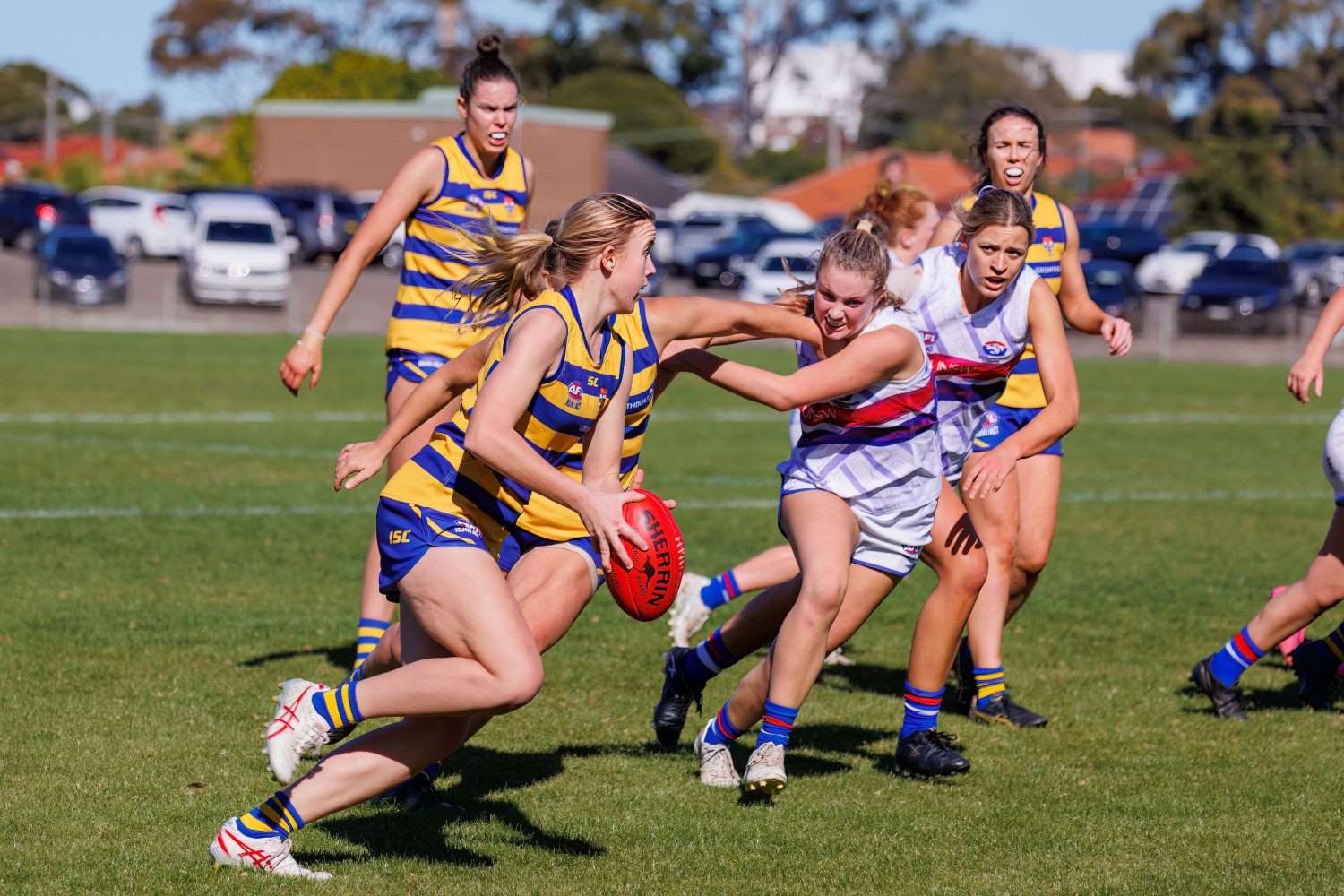Introduction
Aussie Rules Football, fondly known as ‘footy’, is more than just a sport in the Land Down Under—it’s an integral part of Australian culture. Rooted in the mid-19th century, this unique blend of football and rugby has captivated audiences for decades with its swift pace, dramatic marks, and high-octane scoring.
Originally, the world of Aussie Rules Football mirrored the era from which it originated—a period when women, for the most part, were relegated to the sidelines. Back then, footy was a bastion of masculinity, reflecting norms from a time when gender roles were rigidly defined. Women were often seen cheering from the stands but seldom sharing the thrill and grit of the ground. The sport was, in essence, a man’s domain.
But make no mistake—the absence of women on the field wasn’t due to a lack of passion or ability; rather, it was society’s design. Over time, as societal norms evolved, so did the sport, gradually opening its arms to women eager to make their mark. Let’s wind the clock back and trace the inspiring journey of women in Aussie Rules Football.
The Birth of Women Participation in Aussie Rules
Many may find it hard to believe now, but there was a time when Aussie Rules Football was strictly a boys-only club. Fortunately, that reality is now long gone. The journey of women into the heart of Australia’s favorite game started thanks to a few determined pioneers who believed sport should have no gender.
- The first recorded women’s match: 1915 in Perth, organized as a charity event during World War I, it sparked interest across regions.
- First official match: 1933 in Yarraville, Victoria, giving women’s footy a significant foothold.
- Launch of VWFL: In 1981, the Victorian Women’s Football League was formed, giving women an official platform to participate and compete.
Early women pioneers didn’t just play—they disrupted the norm. Their passion challenged entrenched mindsets, and organizations began to slowly recognize their efforts. You can read more about these milestones and heroes on Aussie Rules Pro.
Growth and Development Over Time
The birth of women’s footy was just the seed. What followed over the decades was a steady and determined journey of growth.
Key milestones in this evolution include:
- Formation of local clubs like the Melbourne University Mugars in the 1990s, one of the first all-women’s teams.
- Expansion of the VWFL which started modestly with only four teams, then rapidly grew as social support expanded.
- Introduction of the Youth Girls Competition in 2004, fostering talent among girls aged 13–18.
As participation swelled, so did public and institutional support. Clubs created women’s divisions, media began to pay attention, and exhibition matches drew increasingly larger crowds. This era laid the foundation for the professional frameworks we see today in women’s Aussie Rules Football.
Current State of Women’s Aussie Rules Football
Today, women’s Aussie Rules Football is thriving on multiple fronts. Participation and visibility have reached record highs, and gender equality in the sport is now a national talking point.
Highlights of the Present Scenario:
- AFL Women’s (AFLW): Launched in 2016, this professional league has transformed the competitive landscape for female athletes.
- Star Players: Erin Phillips, Tayla Harris, and Daisy Pearce have not only raised the bar but also become role models for aspiring players.
- Representation: Women now feature prominently as coaches, officials, and administrators, showing the sport’s inclusivity from field to front office.
What’s more, the sport’s reach has gone international. Competitions like the International Cup and the European Championships provide platforms for female footy players worldwide to shine.
Women are no longer spectators—they’re history-makers in every sense.
Challenges and Overcoming Adversity
Like any transformative movement, the evolution of women’s participation in Aussie Rules wasn’t without its battles. The struggle to achieve parity was filled with resistance, underfunding, and social prejudice.
Common Hurdles Faced:
- Lack of resources and competitive opportunities.
- Gender stereotypes labeling footy as “unsuitable” for women.
- Poor media coverage and fewer sponsorship deals.
Despite these setbacks, women persisted. Icons like Daisy Pearce exemplify the resilience of athletes who broke stereotypes and fought for their place on—and off—the field. Their courage fostered pathways for thousands of emerging players and proved that passion, grit, and talent know no gender.
These stories remind us that adversity often builds strength—and in the case of women’s footy, it built an unshakable legacy.
The Future of Women’s Aussie Rules
Looking ahead, the momentum for women’s Aussie Rules Football continues to accelerate. The stage is set for even greater achievements in the coming years.
Promising Trends:
- Grassroots Expansion: More junior and community clubs are forming girls’ teams, increasing accessibility.
- Commercial Support: With high ratings and growing fan bases, brands and broadcasters are committing to the women’s game.
- International Growth: Interest in North America, Asia, and Europe is introducing Aussie Rules to new audiences and female talent pools.
- Inclusion and Representation: Administrative bodies now prioritize gender equity policies to ensure all levels of the sport are inclusive.
The next chapter promises not only growth in numbers but also in innovation, quality, and scope, ensuring more stories are written by and about women in the game.
Conclusion
The story of women’s Aussie Rules Football is far more than a sporting tale—it’s a narrative of courage, persistence, and breaking barriers. Once sidelined, women today are integral to the fabric of the sport, both locally and globally.
Their contribution has reshaped Aussie Rules Football into a diverse, inspiring, and forward-thinking game. The next generation of women footy players will benefit from the sweat and spirit of those who came before, and they, too, will continue pushing boundaries.
So whether you’re a player, a spectator, or someone discovering the sport, now is the perfect time to get involved. Visit Aussie Rules Pro to learn more about the ongoing journey and how you can support the evolution of women’s Aussie Rules Football.
Because every story, every achievement, every kick matters.


